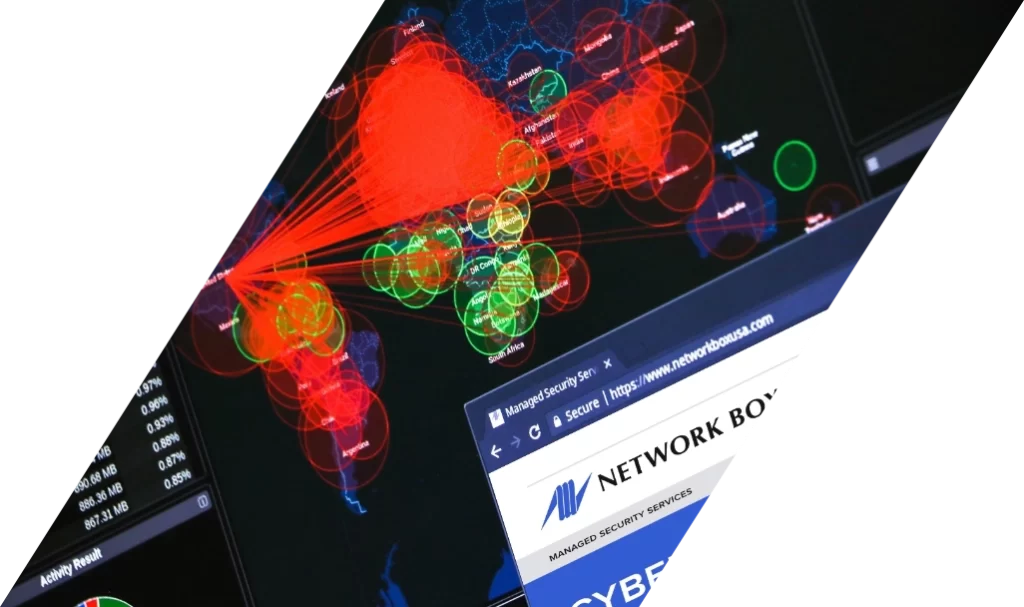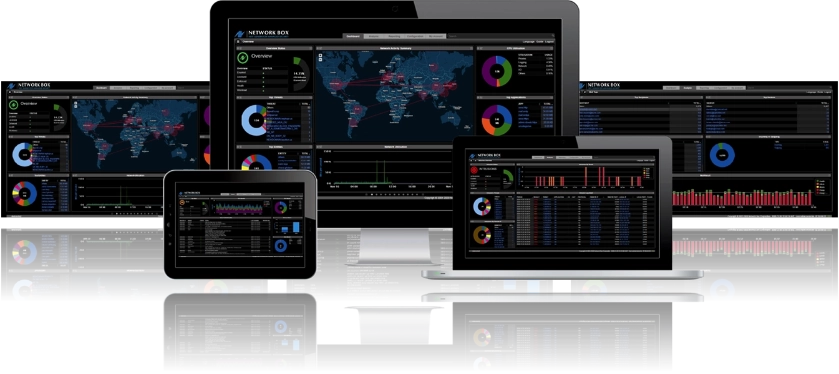A complete Solution Set.
Network Box USA’s comprehensive, unified security solutions are combined with our world class service to detect and neutralize threats before they strike, so you don’t have to.

Edge Defense & SaSE.
A complete stack of purpose-built cybersecurity and networking solutions aligned with Gartner’s SASE framework, offering comprehensive protection to meet the needs of today’s business.
SASE
Software-Defined Wide Area Network
SD-WAN
A key component of Edge Defense and a SASE architecture, our Secure SD-WAN optimizes network traffic and allows businesses to securely connect between HQ, branch and home offices, mobile worker locations, data centers and cloud services, regardless of network connection type. Centrally configured security policies minimize misconfiguration and enforce consistent policies across all your locations.
Secure Web Gateway
SWG
Our Secure Web Gateway+ (SWG+) service, a key component of Edge Defense, is a comprehensive next-generation managed firewall bundle, purpose built for today’s distributed businesses and remote workforce. It includes FW+ (Firewall, IPS, VPN), web browsing protection modules (anti-malware for files and URLs), HTTP and HTTPS, content filtering, policy enforcement, application filtering and more, ensuring businesses are fully protected from advanced threats.
Web Application Firewall
WAF
Our extended feature WAF+ service is a multi-level Web Application Firewall providing comprehensive protection for web servers and web applications. It effectively mitigates attacks and vulnerabilities at the web application layer, while simultaneously providing a load-balanced, fault-tolerant production environment.
Unified Threat Management
UTM+
UTM+ is an all-inclusive solution providing a comprehensive set of security functions and technologies within one single unified system. Our solution addresses incoming threats from the Internet such as intrusion attempts, zero-day threats, infection by trojans, viruses and other malware, spam, denial of service, ransomware, and more. UTM+ also prevents outgoing threats from your business by blocking leakage of important information, denying access to non-work-related or undesirable websites and applications.
Managed Detection & Response.
Providing continuous monitoring, threat detection, containment and investigation.
Security Information & Event Management
SIEM+ & XDR
Our pure cloud based Security Information & Event Management+ (SIEM+) service integrates all security and event logs across your entire network into one centralized platform. An advanced Correlation Engine is at the heart of SIEM+, taking a high-level perspective of data items, and correlating them into actionable security incidents. SIEM+ is used to co-ordinate an integrated, multi-level cyber defense posture providing comprehensive network visibility, automated cloud-based reporting and back-up. Recognize anomalies and respond to incidents faster minimizing downtime, and any potential data or financial loss.
Security Operations Center
SOC
Our global network of SOCs does it for you, managing and protecting your network 24x7x365 to ensure that you are constantly protected against emerging cyber threats and security issues. Combined with our Global Threat Intelligence engine, security patches are automatically PUSHed out and installed in our devices, using patented PUSH technology if a new threat is detected. Every device in the world is updated in an average time of less than 45 seconds. Our in-the-cloud defense shield, Z-Scan, blocks new threats in as little as 3 seconds from when they first appear.
With 4 ISO certifications, compliance with the latest PCI DSS v3.2 standard and highly qualified security engineers that can respond to anomalies and incidents, you can rest easy knowing we have you covered!
Endpoint Detection & Response
EDR
With our EDR solution, you can stop ransomware with complete certainty. Take control using zero-trust endpoint protection and block ransomware instead of reacting to it. Launch your “Zero Trust” cybersecurity framework using our app authentication technology to easily control which applications and scripts run in your network.
Empowering Your Defense: Unraveling Threats, Securing Futures.
More Protection.
Whether deployed stand alone or in combination with Edge Defense and MDR, round out your cybersecurity stack with even more protection.
Managed Cloud Email Security
MCES
MCES is our cloud-based solution specifically designed to secure a business’s email platform and block the flow of malicious emails to users. Multiple mail scanning engines verify every email and block malicious emails containing bad links, malware, spam, and scams from being received by a user.
MCES’s patented push technology ensures businesses are protected with the latest security updates, in just under 45 seconds from availability, and its email scanning engine catches spam with success rates of 99.78%, making it the best choice for email security.
Penetration Testing
PEN Testing
Ensure your organization’s security with our expert penetration testing services. Our team of certified ethical hackers simulates real-world attacks to identify vulnerabilities before they can be exploited. We provide detailed reports with actionable insights, helping you fortify your defenses and stay one step ahead of cyber threats. Trust us to safeguard your critical assets and maintain your peace of mind. Secure your network, applications, and data with our cutting-edge penetration testing services.
Cybersecurity Awareness Training
Our Security Awareness Training service empowers your employees with the knowledge and skills to recognize and mitigate cyber threats. Delivered by our expert Managed Security Service Provider (MSSP) team, our comprehensive training program covers phishing, social engineering, password security, and best practices for data protection. Tailored to your organization’s specific needs, and the needs of individuals, our engaging and interactive sessions ensure your staff stays vigilant and proactive, significantly reducing the risk of security breaches. Invest in our training to build a resilient and security-conscious workforce.
Reputation Monitoring
While it takes considerable time and resources to build a business’s reputation, your online reputation can be destroyed in a matter of minutes. Data breaches send personal information and access credentials to the dark web where it can be used against a business or its employees. A business’s domain and IP ranges can end up on blacklists affecting its ability to conduct business. SSL certificates can expire, damaging a business’s reputation.
That is why many businesses today use our reputation monitoring service to monitor the dark web, blacklists, and SSL certificates, so when problems arise, they can act immediately.

